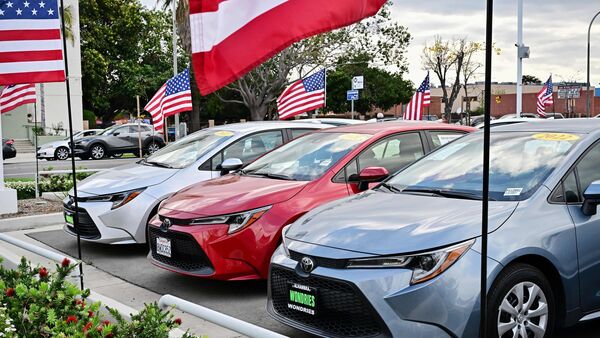The U.S. automotive market is experiencing a rapid depletion of both new and used vehicle inventories as consumers flock to dealerships, motivated by the looming threat of higher prices due to new tariffs. This surge in demand has led to a notable contraction in available supply, with industry analysts warning of potential sales disruptions if the trend continues.
According to Cox Automotive, the days’ supply of new vehicles, a key metric calculated by dividing current inventory by the estimated daily retail sales rate, has fallen dramatically. At the beginning of March, dealers had a 91-day supply of new vehicles. By early April, that figure had dropped to just 70 days, reflecting a 23% decline in a single month. The total number of new vehicles on dealer lots stood at 2.69 million units at the start of April, down from 2.99 million at the beginning of March, representing a 10.2% month-over-month decrease and a 2.4% drop compared to the same period last year.
This tightening supply is directly linked to a surge in retail sales, especially in the final days of March when the announcement of new import tariffs spurred a wave of urgent buying. Cox Automotive’s analysis shows that the 30-day weekly sales pace at the end of March was up 17.2% from late February and 11.9% higher than a year ago. The rush to purchase vehicles before tariff-induced price increases has accelerated the drawdown of inventory, pushing days’ supply to levels last seen in 2023.
The root cause of this inventory squeeze is the recent implementation of tariffs on imported vehicles, with additional tariffs on parts expected to take effect in May. Consumers, anticipating that these tariffs will soon be reflected in higher sticker prices, are acting quickly to secure vehicles at current rates. This behavior has not only depleted inventory faster than usual but has also created a sense of urgency that is unlikely to abate as long as tariff uncertainty persists.
Industry experts caution that if this trend continues, automakers and dealers could soon exhaust their tariff-free inventories. Once these vehicles are sold, the market may face a sharp slowdown in sales, particularly if price increases outpace consumer willingness or ability to pay. The current pace of sales, driven by fear of future price hikes, may be unsustainable if inventory levels are not replenished or if higher prices dampen demand.
The impact of shrinking inventory is not uniform across all brands. Among mainstream automakers, ten have seen their days’ supply decrease by 30 days or more in the past month, with Lincoln experiencing the steepest drop at 54 days. This variability suggests that some brands may face more acute shortages, potentially leading to even greater price volatility in certain segments.
The situation presents significant challenges for both consumers and industry stakeholders. For automakers and dealers, the immediate benefit of increased sales volume is tempered by the risk of running out of inventory before new, higher-priced stock arrives. For buyers, the window to purchase vehicles at pre-tariff prices is closing rapidly.
As the market adjusts to the new tariff regime, all eyes will be on inventory trends and consumer demand. If supplies continue to dwindle at the current rate, the U.S. auto market could soon face a period of constrained sales and heightened price competition, with ripple effects throughout the supply chain.

